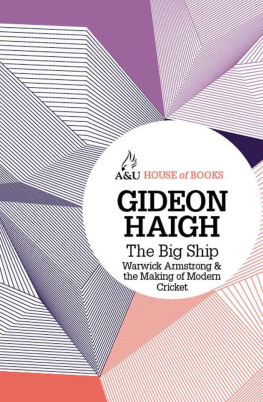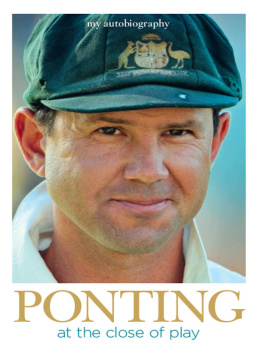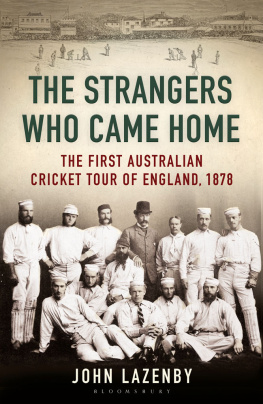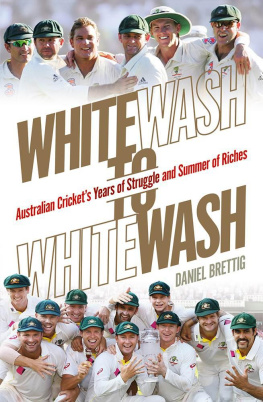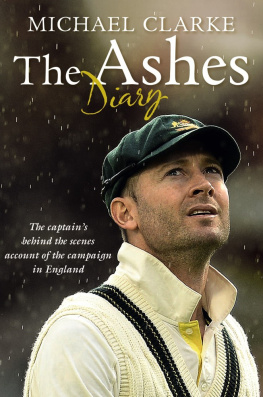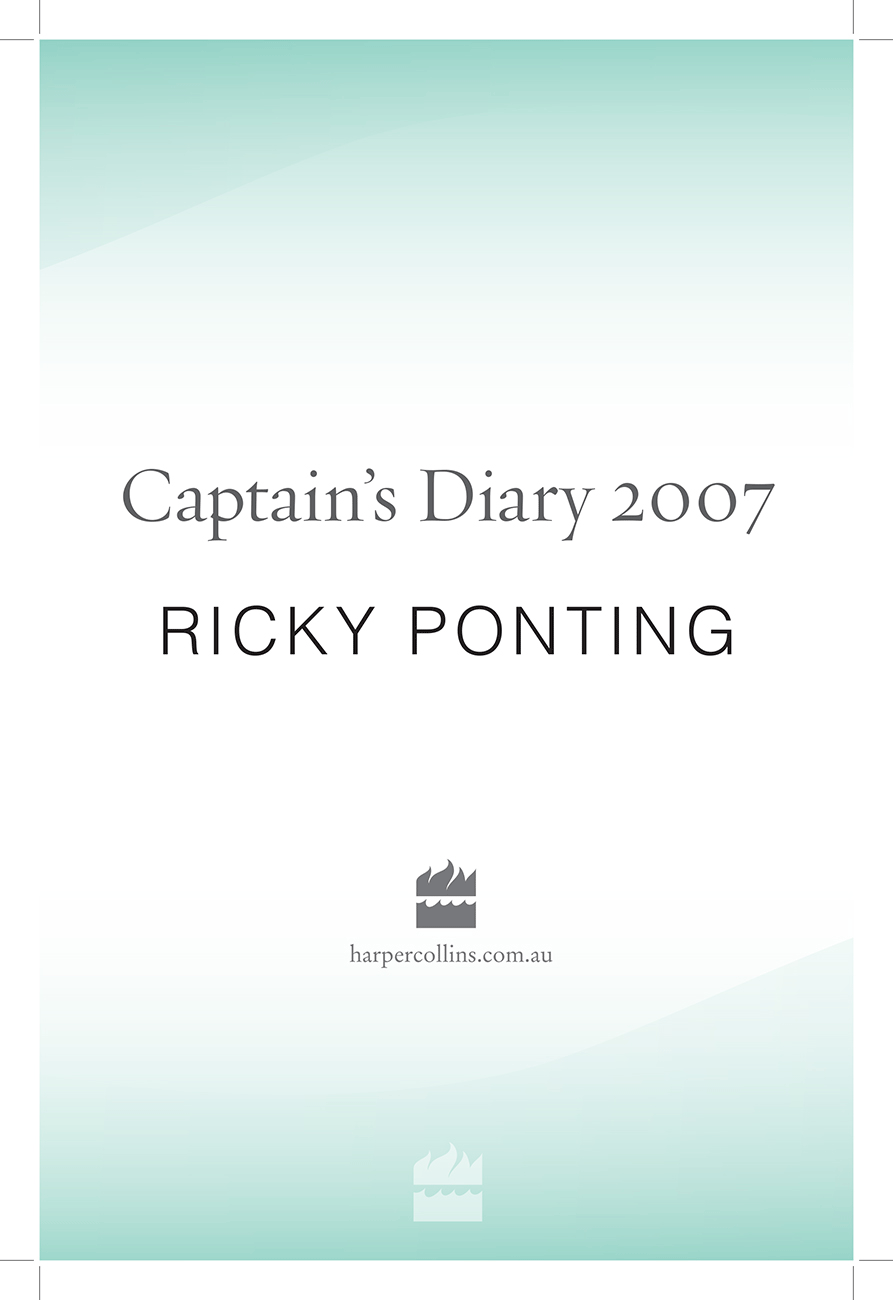For RiannaI could never have made it through such a long and intense season of cricket without your constant love, support and understanding.
Its no coincidence that my best days as a cricketer have occurred since I met you.
The statistics, scores and averages that appear through the pages and at the end of this book were derived from a variety of sources, including three websitesCricinfo Australia (www.baggygreen.com.au), Howstat.com: the cricket statisticians (www.howstat.com.au) and CricketArchive (www.cricketarchive.com)plus Wisden and the Sydney Morning Herald.
Table of Contents
THE INCOMPARABLES VERSUS THE INVINCIBLES
By Geoff Armstrong
IN THE AFTERMATH OF Australias 5-0 Ashes triumph in 2006-07, the renowned cricket writer Mike Coward wrote, The greatness of this Australian team is indisputable. If need be, Ricky Ponting and his men can be called The Incomparables
Cowards tribute was just one of a multitude of plaudits the team received in the wake of their epic victory, yetno matter how many matches this current Australian side winsyou can still find a number of old cricketers and commentators willing to shout, They were better in my day! Neil Harvey was at it before the second Ashes Test, arguing that Shane Warne was the only current-day Australian player who would have got a game with Bradmans Invincibles.
Of course, this is impossible to prove. But what if the question was turned around? How many of the 1948 Australians would get into Ricky Pontings team that regained the Ashes? Its a subtle tack, but an interesting one.
Quickly, the two sides
Fifth Test, 1948: Arthur Morris, Sid Barnes, Don Bradman (captain), Lindsay Hassett, Keith Miller, Neil Harvey, Sam Loxton, Ray Lindwall, Don Tallon, Bill Johnston, Doug Ring.
Fifth Test, 2006-07: Matthew Hayden, Justin Langer, Ricky Ponting (captain), Michael Hussey, Michael Clarke, Andrew Symonds, Adam Gilchrist, Shane Warne, Brett Lee, Stuart Clark, Glenn McGrath.
Lets work down the batting order. Hayden and Langer were fantastic as a duo for five years, averaging 51.41 per opening stand in 113 Test innings, and Hayden is the only Australian opening batsman in Test history to play 30 innings and average more than 50. Langer averaged 45.27 in 105 Tests, which is comparable with Morris 46.49 from 46 Tests. However, a case can be made that Morris career figures are inflated by the fact that he faced inferior bowling for the first half of his Test career. In his first four series, straight after World War II when the attacks that bowled to him were mediocre, Morris averaged 67.78. After that, in his final 27 Tests, he averaged only 34.76. Maybe those latter Tests against better bowlers are a fairer guide to his ability. Barnes did average 63.06 in Test cricket, but he only played in 13 matches, most of them against those same ordinary bowlers Morris flayed.
No doubt, Morris and Barnes were fine players, but did they do enough in Test cricket to eclipse Hayden and Langer? At best, its line-ball. In such a situation, involving four excellent players and with the current Aussie team winning so often, the selectors should stay with the status quo.
Bradman at No. 3 and Ponting (more than 6000 Test runs since the start of 2002, at an average of nearly 72 with 24 hundreds, is a hard record to argue with) at No. 4 pick themselves, as does Miller as the allrounder at No. 6. Well leave the five spot for last.
Gilchrist or Tallon? Plenty of people want to tell you Tallon was the greatest wicketkeeper Australia has ever had, but why then does he have the worst byes-per-100 balls ratio of any Aussie keeper to play in 10 or more Tests? I have never seen a stumper to equal Tallon in speed, wrote Jack Fingleton in his book of the 1948 Ashes tour, Brightly Fades the Don, [but] he missed a number of chances
Tallon took 12 catches in four Tests on the Invincibles tour, a couple of them fabulous, but he did have ordinary days, most notably when he spilt three straightforward chances in Englands first innings of the third Test. Gilchrist is closing in on 400 Test dismissals, and hes arguably the most damaging No. 7 batsman of all time. He wins over Tallon every time.
Lindwall and McGrath (taker of more Test wickets than any other pace bowler, at a miserly average of 21.64) are certain picks to lead the pace attack, and Warne, of course, is the spinner. The final bowling spot comes down to one of Johnston, Lee and Clark, though Ernie Toshack from the 1948 squad and Stuart MacGill, taker of 198 wickets in 40 Tests, are also worthy of consideration.
Given that Miller is also in the side, it is hard to resist the left-handed Johnston, who might just be one of the most underrated bowlers in cricket history.
While Englands bowling attack straight after the war might have been weak, her battingfeaturing Len Hutton, Denis Compton, Bill Edrich and Cyril Washbrookwas not. The West Indies side that came to Australia in 1951-52 included the famous three Ws: Everton Weekes, Clyde Walcott and Frank Worrell. Johnston was superb against all these accomplished players. At the end of that Windies series, hed taken 111 wickets in 24 Tests at just 19.23. To put these figures in perspective, only one Australian bowler in Test history, Charlie The Terror Turner, has taken 100 career wickets at an average less than 20.
From 1952 on, injuries hampered Johnston, but what he did in his first 24 Tests was enough to confirm his great quality. As good as Lee and Clark are, Bill Johnston was better.
This leaves us with the following team: Hayden, Langer, Bradman, Ponting, Miller, Gilchrist, Lindwall, Warne, Johnston, McGrath, plus the No. 5.
The choice for this last batting spot comes down to Neil Harvey or Mike Hussey. Lindsay Hassett was an outstanding Test batsman, good enough to average 46.56 in 43 Tests, but few critics would put him ahead of Harvey, who was Australias best batsman throughout the 1950s. There are at least a couple of parallels between Harvey and Hussey: both are left-handed, and both got off to extraordinary starts to their Test careers.
Hussey has averaged 79.85 with the bat in his first 16 Tests, up to the end of 2006-07 Ashes series, with four centuries, but Harveys own record is hardly shabby. After his first 16 Tests, the youngest member of the Invincibles was averaging 64.59. After nine Tests, he had been averaging an astonishing 106.56, with six centuries. He was still above 60 after 40 Tests, and finished with an average of 48.42 from 79 Tests.
The selectors could argue that Harveys superb career record should get him the final spot, but they could also mount a strong case for retaining the man known as Mr Cricket. After all hes done in the early stages of his Test career, you couldnt really drop Hussey, could you? Hes a crucial part of a special team. Some selectors would stick with him, even ahead of the great Neil Harvey.
SUGGESTING THAT ONLY FOUR of the Invincibles would find places in the 2006-07 Australian Ashes team would be seen as sacrilegious by many fans of the good old days. After all, Sir Donald Bradmans famous side is generally considered to be one of the greatest of all cricket combinations. Its effort in going through the 1948 English summer undefeated ranks among the games most notable achievements, even if Great Britain was still recovering from the damage inflicted on it during World War II.


